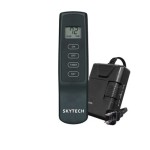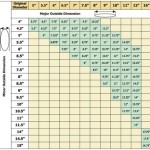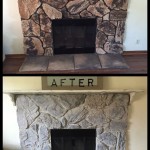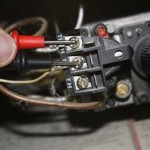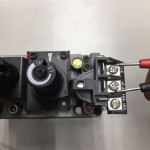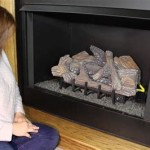Maximizing Wood Efficiency in Fireplace Inserts
Fireplace inserts offer a practical and aesthetically pleasing solution for homeowners seeking to enhance the functionality and efficiency of their existing fireplaces. A fireplace insert is essentially a self-contained firebox designed to fit within the opening of a traditional fireplace. Unlike open fireplaces, which are notoriously inefficient, fireplace inserts are engineered to provide significantly improved heating performance and reduced fuel consumption. The efficiency of a wood-burning fireplace insert is a critical factor for homeowners aiming to lower heating costs, reduce environmental impact, and enjoy consistent warmth during colder months. Understanding the factors influencing wood efficiency and employing best practices for operation are essential for maximizing the benefits of a fireplace insert.
The efficiency of a wood-burning fireplace insert is typically measured by its ability to convert the energy stored in the wood into usable heat for the home. An efficient insert will extract a greater percentage of the wood's energy, resulting in more heat output per log and less wasted fuel. Several design features and operational practices contribute to this efficiency. Airflow control, combustion technology, and proper wood selection are all key elements affecting how effectively a fireplace insert heats a space.
Key Factors Affecting Wood Efficiency in Fireplace Inserts
Several interrelated factors influence the efficiency of a wood-burning fireplace insert. These range from the design and technology incorporated in the insert to the quality of the wood used and the operational practices employed by the homeowner.
Insert Design and Technology
Modern wood-burning fireplace inserts incorporate various technologies aimed at maximizing combustion efficiency. One key aspect is the design of the firebox itself. A well-insulated firebox helps retain heat, promoting more complete combustion of the wood. The shape and size of the firebox also influence airflow patterns, which can affect how efficiently the wood burns.
Airflow control is another critical element. Inserts typically feature adjustable air intake vents that allow the user to regulate the amount of air entering the firebox. Controlling airflow is essential for achieving optimal combustion. Too much air can lead to rapid burning and wasted heat, while too little air can result in incomplete combustion, producing smoke and creosote buildup. Advanced inserts often incorporate secondary combustion systems, which introduce additional air to burn off gases and particulates that would otherwise escape as smoke. This secondary combustion not only reduces emissions but also significantly increases heat output and overall efficiency.
Catalytic combustors are another technology used in some high-efficiency inserts. These devices use a catalyst to lower the ignition temperature of the gases and particulates produced during combustion. This allows the insert to burn these materials more completely, further reducing emissions and increasing heat output. Non-catalytic inserts achieve similar results through sophisticated firebox design and carefully controlled airflow patterns.
Wood Selection and Preparation
The type and quality of wood used have a significant impact on the efficiency of a fireplace insert. Seasoned hardwood is the ideal fuel source. Seasoning refers to the process of drying wood, typically for six months to a year, until its moisture content is reduced to 20% or less. Burning seasoned wood results in more efficient combustion because less energy is required to evaporate moisture from the wood. Wet or green wood burns inefficiently, producing more smoke, less heat, and increased creosote buildup in the chimney.
Different types of wood also have varying energy densities. Hardwoods, such as oak, maple, and ash, contain more energy per unit volume than softwoods like pine or fir. Using hardwoods will result in longer burn times and greater heat output compared to using softwoods. The size and shape of the wood also matter. Splitting wood into appropriately sized pieces promotes better airflow and more efficient combustion. Pieces that are too large may not burn completely, while pieces that are too small may burn too quickly.
Proper wood storage is also crucial for maintaining its quality. Wood should be stored in a dry, well-ventilated area, off the ground, and covered to protect it from rain and snow. This helps prevent the wood from reabsorbing moisture and ensures that it remains seasoned and ready to burn efficiently.
Operational Practices
Even the most efficient fireplace insert will perform poorly if not operated correctly. Starting the fire properly is essential for establishing a good draft and achieving optimal combustion. The "top-down" fire starting method, where kindling and smaller pieces of wood are placed on top of larger logs, can often lead to a quicker, cleaner start. This method helps to preheat the chimney, improving draft and reducing the amount of smoke produced during startup.
Maintaining a hot fire is also crucial for efficient combustion. Allowing the fire to smolder or burn at a low temperature can result in incomplete combustion, producing more smoke and creosote. Adding wood in a way that maintains a consistent flame and heat output is important. Overloading the firebox can stifle the fire and reduce efficiency, while adding wood too infrequently can cause the fire to die down, requiring more effort to reignite.
Regular cleaning and maintenance are also essential for ensuring optimal performance. Creosote buildup in the chimney can reduce draft, increase the risk of chimney fires, and decrease overall efficiency. A certified chimney sweep should inspect and clean the chimney at least once a year, or more frequently if necessary. The firebox itself should also be cleaned regularly to remove ash and debris, which can impede airflow and reduce combustion efficiency.
Understanding Efficiency Ratings
When selecting a fireplace insert, understanding efficiency ratings is important. The Environmental Protection Agency (EPA) regulates wood-burning appliances, including fireplace inserts, to ensure they meet certain emission standards. The EPA also provides efficiency ratings for certified inserts, which can serve as a useful guide for consumers.
The EPA efficiency rating represents the percentage of the wood's energy that is converted into usable heat. A higher efficiency rating indicates that the insert is more effective at extracting heat from the wood and will require less fuel to heat a given space. It's important to note that the EPA efficiency rating is determined under controlled laboratory conditions and may not perfectly reflect real-world performance. Factors such as wood quality, operating practices, and the specific characteristics of the home can all influence the actual efficiency of the insert.
In addition to the EPA efficiency rating, it is also important to consider other factors such as the insert's heating capacity, burn time, and emissions levels. The heating capacity indicates the size of the area that the insert is capable of heating, while the burn time refers to how long the insert can operate on a single load of wood. Lower emissions levels indicate a cleaner-burning insert that is less harmful to the environment. Selecting an insert that is appropriately sized for the space being heated and that meets the homeowner's specific needs and preferences is crucial for maximizing satisfaction and efficiency.
Practical Tips for Enhancing Wood Efficiency
Beyond selecting an efficient insert and using appropriate fuel, several practical tips can further enhance wood efficiency and reduce heating costs.
Proper insulation is essential for minimizing heat loss from the home. Insulating walls, ceilings, and floors can significantly reduce the amount of energy required to heat the space. Sealing air leaks around windows, doors, and other openings can also help prevent heat from escaping. A well-insulated and airtight home will require less energy to heat, regardless of the heating source.
Using a fireplace insert in conjunction with other heating systems can also improve overall efficiency. For example, a homeowner might use the insert to supplement the central heating system during peak heating hours, reducing the reliance on more expensive fuels such as oil or gas. Zoning the home's heating system can also help to direct heat to the areas where it is needed most, further increasing efficiency.
Monitoring the fire and making adjustments as needed can also improve combustion efficiency. Observing the color and behavior of the flames can provide valuable insights into the combustion process. A clean, bright flame indicates efficient combustion, while a smoky or smoldering flame suggests incomplete combustion. Adjusting the air intake vents can help to optimize airflow and achieve more complete combustion. Regularly monitoring the chimney for creosote buildup and scheduling professional cleanings as needed are also essential for maintaining optimal performance and preventing chimney fires.
By understanding the factors influencing wood efficiency and implementing these best practices, homeowners can maximize the benefits of their fireplace inserts, reduce heating costs, and enjoy a comfortable and efficient heating solution for years to come.

Fireplace Inserts 5 Money Saving Benefits Efficient Heating

Top 5 Reasons To Consider A Fireplace Inserts Wi Ia Il

The Best Wood Burning Fireplace Inserts Or Stoves Ecohome

Wood Burning Fireplace Inserts Insert Installation

Why A Wood Burning Fireplace Insert Bethesda Md Service

Benefits Of Installing A Wood Burning Fireplace Insert

Why A Wood Burning Fireplace Insert Bethesda Md Service

Wood Burning Fireplace Insert Faq Fireplaces Direct Learning Center

Wood Burning Fireplace Insert Heating Efficiency Raleigh Nc

Wood Burning Insert Installation What To Expect Why It S Worth We Love Fire
Related Posts

